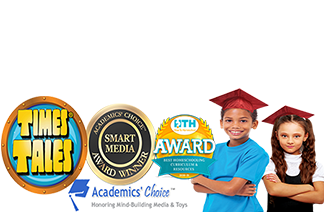Independently Published by Florida National University - Research showed an overall increase of 70% - 80% on test scores!
Times Tales® Statistical Study excerpt, " All the learning disabled students noted an average increase in score of at least 70%".

Excerpts from Action Report Study Below. CLICK for full 37 page report (PDF)
Based on observations as well as technology-based diagnostic scores, students can solve multiplication problems based on the lower tables but specifically struggle with the upper times tables...The learning disabled students noted an average increase in score of at least 70% with the Times Tales® program.
(page 4) All students (in the study) had been identified as having specific learning disabilities (SLD) and required Individual Education Plans (IEP).
(page 18) The average gains for all students were an 81% increase in overall score.
(page 10) Another result of the study was improved mathematical reasoning strategy application; specifically, after the study the participants moved from using juvenile strategies such as counting on to more developed strategies such as automatic retrieval .
(page 18) Findings The results of the study were consistent with those of similar studies conducted by Skarr et al. (2014) and Min Wook and Bryant (2016). When presented with a multisensory approach to learning basic multiplication facts, students were able to achieve mastery of facts with structured interventions. The interventions provided multiple means of instruction and included audio/visual, mnemonic, and game-based support for learners. Students participating in this study looked forward to the sessions and could sense that they were improving in basic fact recall. In addition to the students’ overall basic multiplication fact assessment score progress, their pre- and post- intervention questionnaires and observations were analyzed.
